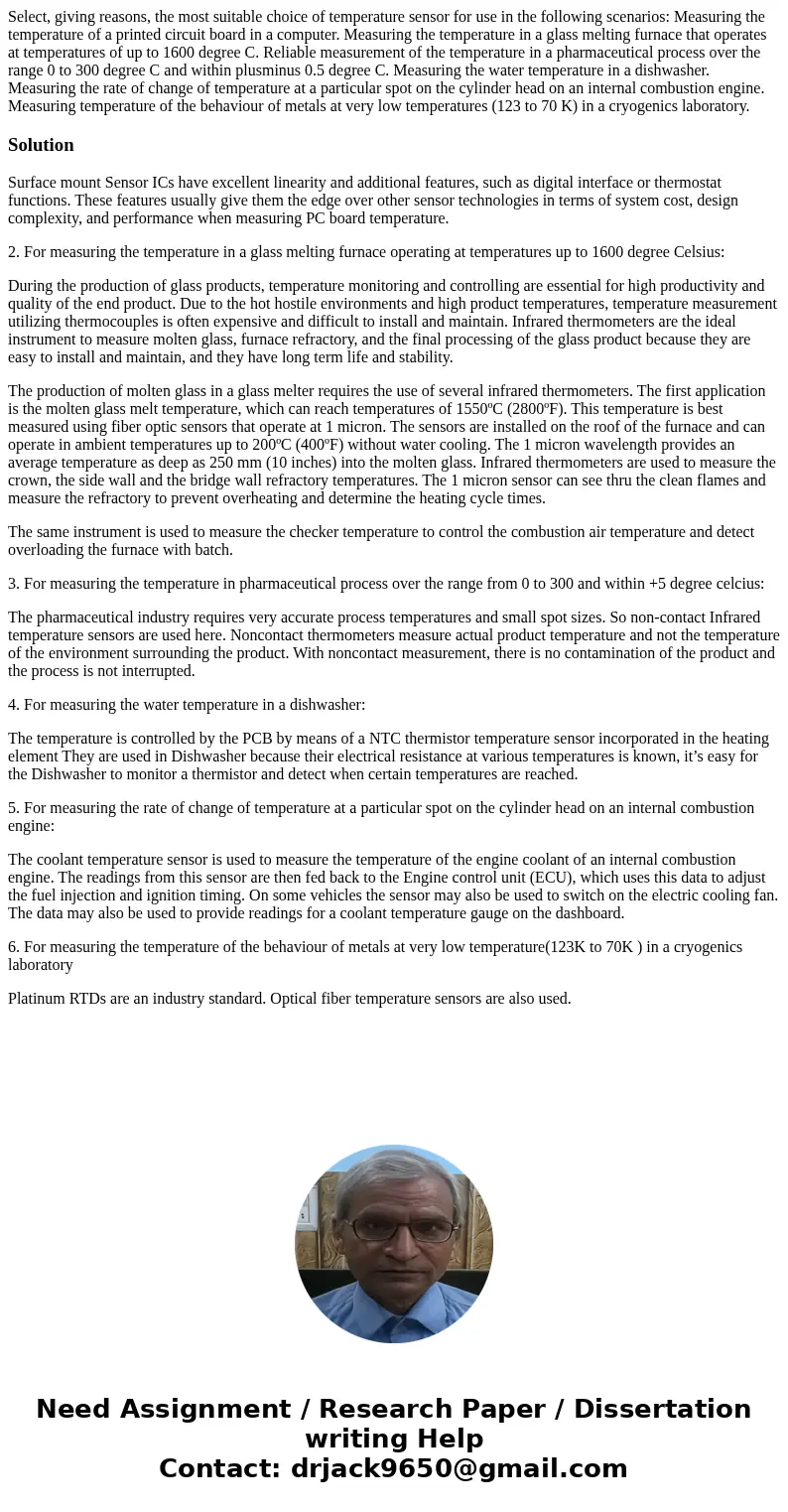Select giving reasons the most suitable choice of temperatur
Solution
Surface mount Sensor ICs have excellent linearity and additional features, such as digital interface or thermostat functions. These features usually give them the edge over other sensor technologies in terms of system cost, design complexity, and performance when measuring PC board temperature.
2. For measuring the temperature in a glass melting furnace operating at temperatures up to 1600 degree Celsius:
During the production of glass products, temperature monitoring and controlling are essential for high productivity and quality of the end product. Due to the hot hostile environments and high product temperatures, temperature measurement utilizing thermocouples is often expensive and difficult to install and maintain. Infrared thermometers are the ideal instrument to measure molten glass, furnace refractory, and the final processing of the glass product because they are easy to install and maintain, and they have long term life and stability.
The production of molten glass in a glass melter requires the use of several infrared thermometers. The first application is the molten glass melt temperature, which can reach temperatures of 1550ºC (2800ºF). This temperature is best measured using fiber optic sensors that operate at 1 micron. The sensors are installed on the roof of the furnace and can operate in ambient temperatures up to 200ºC (400ºF) without water cooling. The 1 micron wavelength provides an average temperature as deep as 250 mm (10 inches) into the molten glass. Infrared thermometers are used to measure the crown, the side wall and the bridge wall refractory temperatures. The 1 micron sensor can see thru the clean flames and measure the refractory to prevent overheating and determine the heating cycle times.
The same instrument is used to measure the checker temperature to control the combustion air temperature and detect overloading the furnace with batch.
3. For measuring the temperature in pharmaceutical process over the range from 0 to 300 and within +5 degree celcius:
The pharmaceutical industry requires very accurate process temperatures and small spot sizes. So non-contact Infrared temperature sensors are used here. Noncontact thermometers measure actual product temperature and not the temperature of the environment surrounding the product. With noncontact measurement, there is no contamination of the product and the process is not interrupted.
4. For measuring the water temperature in a dishwasher:
The temperature is controlled by the PCB by means of a NTC thermistor temperature sensor incorporated in the heating element They are used in Dishwasher because their electrical resistance at various temperatures is known, it’s easy for the Dishwasher to monitor a thermistor and detect when certain temperatures are reached.
5. For measuring the rate of change of temperature at a particular spot on the cylinder head on an internal combustion engine:
The coolant temperature sensor is used to measure the temperature of the engine coolant of an internal combustion engine. The readings from this sensor are then fed back to the Engine control unit (ECU), which uses this data to adjust the fuel injection and ignition timing. On some vehicles the sensor may also be used to switch on the electric cooling fan. The data may also be used to provide readings for a coolant temperature gauge on the dashboard.
6. For measuring the temperature of the behaviour of metals at very low temperature(123K to 70K ) in a cryogenics laboratory
Platinum RTDs are an industry standard. Optical fiber temperature sensors are also used.

 Homework Sourse
Homework Sourse